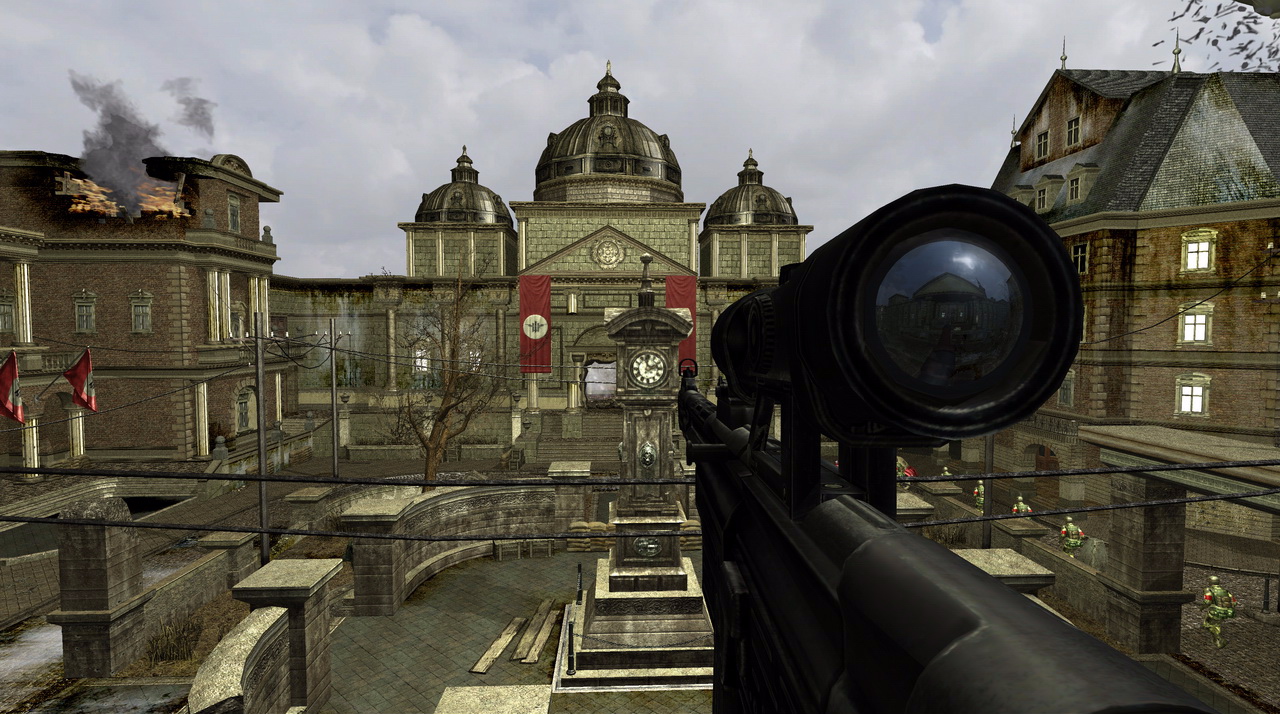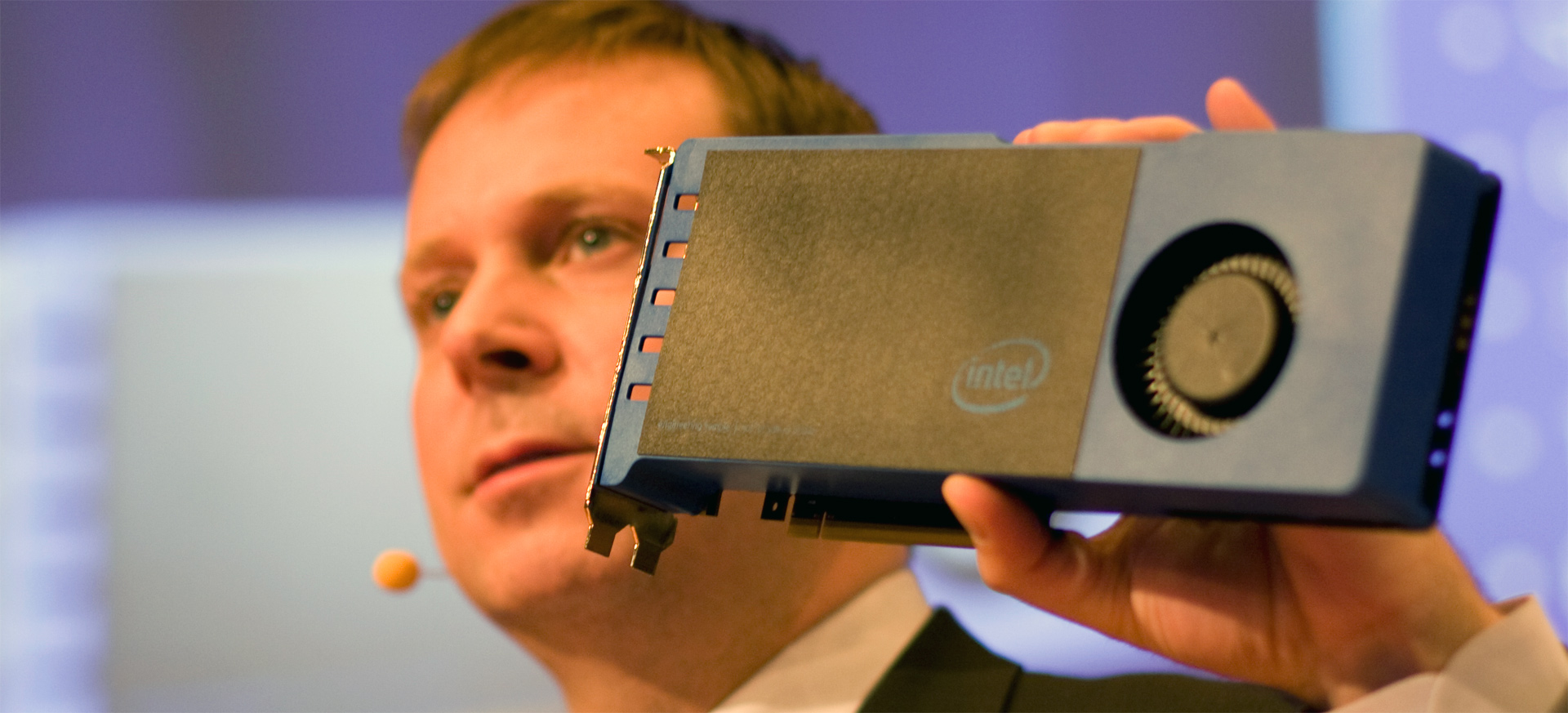Intel will be showing a new Ray Tracing project at IDF 2010 where it uses the Larrabee-based graphics card ”Knights Ferry” to render and stream the classic action game Wolfenstien to even small notebooks, since all rendering is handling by a separate cloud server.
Intel is hardly the first to show streaming gaming since similar projects has been shown on everything from desktops to mobile phones. The cool about Intel’s demonstration is that it uses raytracing, a 3D rendering technology that uses light reflections to draw images with 3D depth. The effect is a lot more natural and is used frequently in movies, but it is a lot more demanding.

Note the reflection in the scope
Rendering games with raytracing has been demonstrated by Intel many times before, but now it has raised the bar and says that through a cloud solution it can render the game Wolfenstien in realtid and then stream the picture to a regular computer.
Intel’s cloud server consists of four separate system equipped with an Intel Knights Ferry graphics card each. Intel’s server model of the graphics card Larrabee that was scrapped for retail earlier this year. With thirty or so x86 cores per graphics card there is plenty of parallel power, which is perfect for raytracing.
It is a Many Integrated Core (MIC) architecture targeted towards the High-Performance Computing market (meaning: not targeted to the individual gamer to be bought). As ray tracing is a highly parallel application it can therefore take very good benefit of the many cores that are in a single chip on the Knights Ferry board. Once a chip in one of the servers has finished calculating a new frame for the game it will send it over the network to a thin client, in this case a small laptop.

Intel Knigts Ferry also known as Larrabee
Intel will be showing its raytracing demo during Intel Developer Forum in San Fransisco this week, but already there is a video of the project at Youtube that shows how it streams Wolfenstein with raytracing to a notebook, 1280×720 pixel resolution.
Considering the power needed to power a game with raytracing it is pretty obvious that we will not be seeing the technology in regular PC for a very long time, but the demonstration shows the level of detail that is possible.
More information on Wolfenstein raytracing can be found at wolfrt.de.





